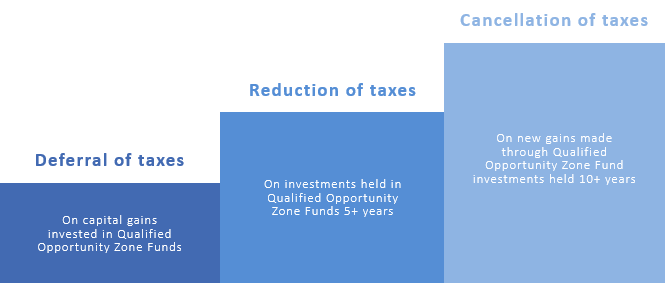
Assess the terrain, map and support community planning
Ensuring that the Opportunity Zones incentive stimulates equitable economic development and growth in local communities requires careful, long-term planning. Federal legislation required state governments to identify census tracts to designate as OZ, and that process varied from state to state. In some cases, states incorporated feedback from local communities. But given the time pressure to designate tracts, not all states gathered significant input from communities in designating tracts.
The planning phase, therefore, is a critical opportunity to bring a range of community stakeholders to the table, to safeguard an equitable and inclusive process, and to elevate the community’s voice. Again, for Opportunity Zones to fulfill their intended purpose, this aspect of the process is crucial.
Another linchpin issue is making sure that in addition to spurring real estate development, OZ plans provide quality employment opportunities for residents in the designated census tracts. This entails gauging the existing resources and potentials for workforce development, financial stability coaching (as with LISC’s Financial Opportunity Centers) and various supports that help people participate in the 21st-century economy. Business investing, for its part, creates more demand for real estate investment. The two sectors can have a mutually beneficial relationship that provides a bulwark against gentrification and displacement. These factors, therefore, should remain on the front burner as the planning process unfolds.
While the planning steps below mirror standard community development planning techniques, the incentive introduces new issues that also affect planning, such as timing and type of allowable investments. The planning guidelines in the appendix that follows consist of proven community engagement strategies, as well as new considerations specific to Opportunity Zone investments in a local community.

Take stock and map Opportunity Zone tracts in your market
A first step in planning for Opportunity Zone investments is determining the location of designated tracts in or near your community. The Department of Treasury has made all tracts publicly available, and the Economic Innovation Group, an architect of the OZ incentive, has also created resources to identify tracts, including state-by-state OZ maps and tract profiles.
Create a clear, visually compelling map that illustrates how designated tracts overlay local neighborhoods or your specific community. This will be an indispensable tool to use throughout the planning process.
Healthy neighborhoods have access to housing, schools, commercial and retail facilities, employment, parks, heath and day care, and people who live and work there feel safe. As part of the planning process, then, partners should examine current neighborhood assets that contribute to these outcomes, and assess the gaps that need to be filled through additional investment.
For example, does the community have access to public transportation, but lack a nearby grocery store? These are the types of question that community partners will grapple with in developing the map. For some additional discussion questions to help the planning committee determine the neighborhood’s current resources, as well as areas for improvement, see Chicago LISC’s Planning Handbook. Mapping these assets and needs will help the task force identify specific projects and strategies that will become part of the community plan. This mapping can form an additional layer on the maps of tracts created earlier in the process, and eventually, certain projects can be flagged for potential opportunity zone investors.

Taking inventory of recent land or property purchases can help inform an assessment of the community’s socioeconomic and physical needs. This will also provide a view into potential pipeline opportunities in the tracts, as well as purchases that might risk causing gentrification or displacement in your market. In that case, anti-displacement strategies should be incorporated into the community’s plan.
Identify Existing Community Plans
Next, it’s important to determine whether any existing community plans are already in use in those areas, such as what are known as Quality of Life Plans. LISC has worked extensively with communities to develop Quality of Life Plans in many communities across the country (see Step Two, Appendix), but there are many other approaches to community plans. Local CDCs, as well as your municipality’s website, are a good place to look for existing community plans. These may include: municipal master plans, economic development or housing plans, consolidated plans for the purposes of HUD's Office of Community Planning and Development work, and urban renewal plans.

If such a plan is in place, it will help inform how OZ investments are directed into previously identified projects for the community. In other cases, there may be an existing plan that is outdated. An older plan can inform a new community planning process, so as to avoid duplication of efforts, but it might not be determinative, and many steps of the community planning process will need to be considered. Finally, in the case where a community has never conducted a plan, preparing to do projects in OZ tracts should ideally follow a community-centered planning process.
The Heart and Goal of Community Planning
A solid plan enables a community to build consensus around investments to improve access to housing, education, commercial and retail facilities, employment, parks, heath and day care, and neighborhood safety.
The steps outlined in the following appendix (Step 2A) detail how to develop a community-informed plan that drives equitable and inclusive development and economic growth. It's critical to note here that community planning processes, however vital, are time-consuming and, whenever possible, it behooves stakeholders to make use of existing plans that document residents' current desires and needs to inform OZ projects.

